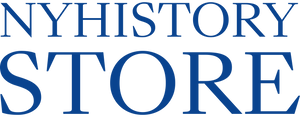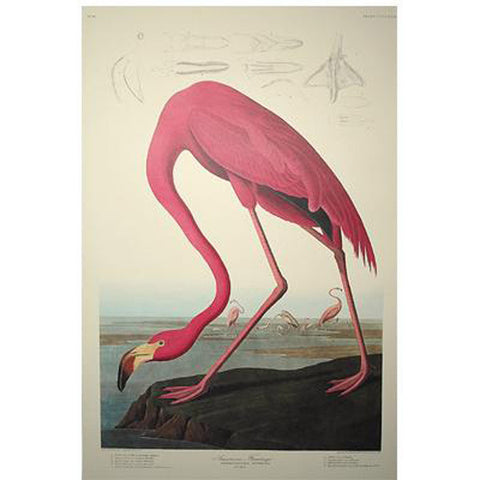Description
Audubon saw several flocks of American flamingos in the Florida Keys in 1832, and while anxious to obtain a specimen from which to make a painting, he was never able to shoot one. During a stay in London, he wrote repeatedly to his friend John Bachman, a Lutheran minister in Charleston, South Carolina, asking for a specimen. In a letter dated October 31, 1837, he said: "As to flamingos their Eggs &c I fear this is up for me; and this proves to me now that I was a great fool not to have gone to Cuba, or sent a person there expressly..."
Fortunately, it wasn't "up" for him after all. He finally obtained specimens from Cuba and made the drawing for this Havell plate in London in 1838.
The flamingo's highly specialized manner of feeding is as noteworthy as its dramatic coloring. The bird plunges its head underwater upside down, then with the upper bill of its sickle-shaped beak serving as a dredge and the tongue as a sieve, it scoops small shellfish from the bottom of shallow lagoons.EHJ
Print size: 26 1/4" x 39 1/4"; image size: 25 1/2 x 20"
Princeton Audubon Limited Edition - produced 1985
Princeton Audubon prints are direct-camera facsimile lithographs of the Robert Havell Jr. (1793-1878) engravings for The Birds of America (1827-38). Princeton's Double elephant Folio prints are issued in limited editions of 500 or 1500 prints. All are numbered and have a seal in the bottom margin to demonstrate their authenticity.
Printed on heavy Mohawk paper that is recommended by the Library of Congress for archives, the paper is specially toned to match the average paper color of the antique originals.
Item Number:
1737


